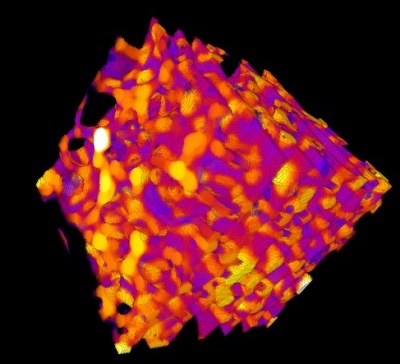Strengthening bone shape analysis
Posted on 15 July 2013
Strengthening bone shape analysis
 By Mike Jackson.
By Mike Jackson.
BoneJ is a suite of open-source plug-ins for bone shape analysis. It is developed by Michael Doube (The Royal Veterinary College, The University of London), who contacted us for assistance via our open call, which led to a collaboration.
The BoneJ plug-ins work within the public domain ImageJ image processing software. It is one of the packages used by our fellow, Richard Abel, in his research into metabolic bone disease.
In our collaboration, we are exploring a number of issues. we'll be advising on a website redesign to make it easier for researchers to understand how to use BoneJ, how BoneJ works, and the ways in which they can contribute to BoneJ's future development. We'll be working to improve the BoneJ community engagement, for example via a contributions to policy and coding standards. We'll improve how BoneJ is tested and how BoneJ could be redesigned to promote testability. Finally, we'll work to improve BoneJ's packaging and make it easier to install, especially in light of BoneJ's third-party dependencies.
We have now conducted a thorough review of BoneJ, looking at the first three of these. A community questionnaire has been launched to discover the views of BoneJ's users on BoneJ and its website, to gain suggestions for improvements and ideas on how and what the users could contribute. We've proposed a contributions policy based on those used by established open-source projects (including Apache, Eclipse and OGSA-DAI). Similarly, we have proposed coding standards based on the Java coding conventions, with additional conventions (e.g. covering the need for copyright, licensing and authorship in source files), again, based on those of Eclipse and Apache.
At present BoneJ includes code written by other researchers, or ported from code written by other researchers. The relevant code has been diligently annotated with this information and with links to related research papers. One of our recommendations is to summarise these contributions on a single page on the website, so it is readily available, and it is clear to users who to acknowledge, and for what, when using specific BoneJ features.
The approach to testing is sound with each new feature or bug having an associated test and with bone images being created in-code, then manipulated using BoneJ, and the expected outputs compared to precalculated values. We've recommended the use of a test coverage plug-in for Eclipse, EclEmma, to highlight code that has not been tested. We also recommended that BoneJ be refactored to separate the GUI-related code from that responsible for image transformation and analysis, to make it more modular and testable.
Over the next few weeks, we'll be working with Michael to implement our recommendations. We'll also be reporting on our progress in further blog posts.
